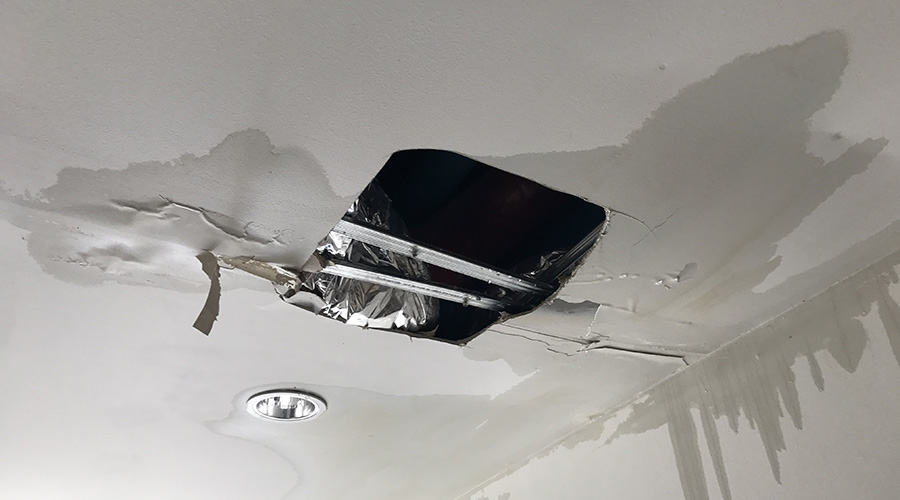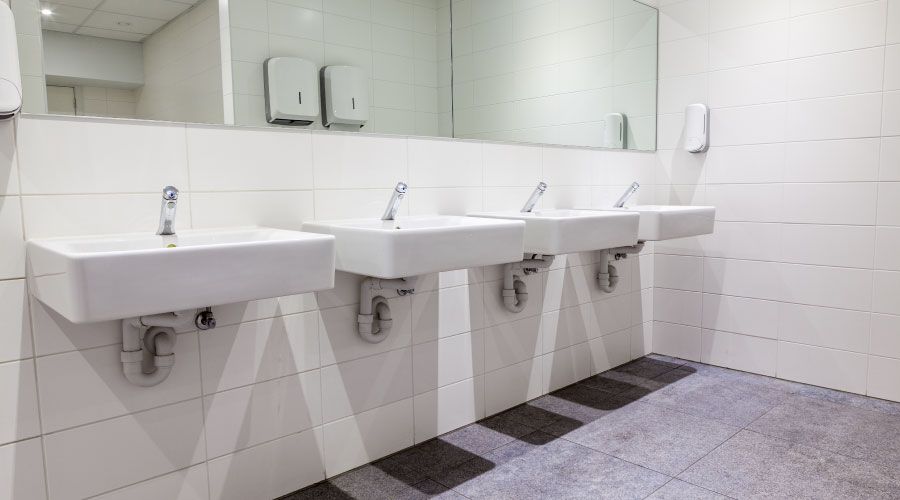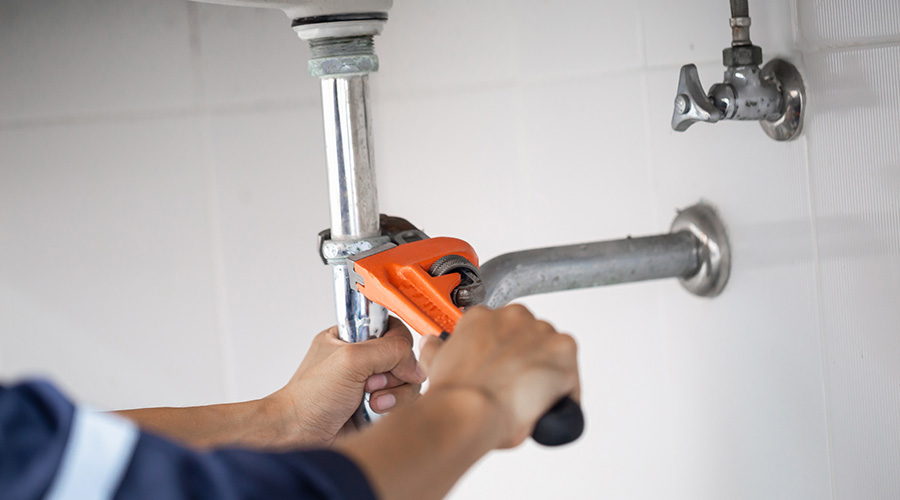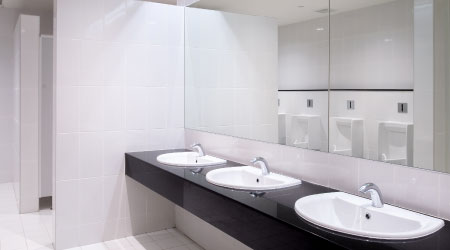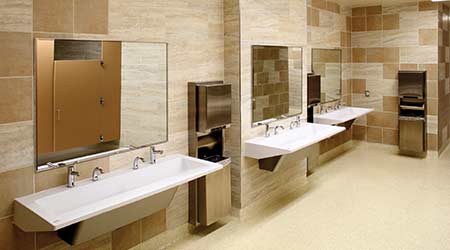 Reducing operating costs is perhaps the biggest benefit that can be achieved through a well-planned restroom upgrade.Bradley Corp.
Reducing operating costs is perhaps the biggest benefit that can be achieved through a well-planned restroom upgrade.Bradley Corp.Water Saving Strategies for Plumbing and Restrooms
Part 1 of a three-part article on plumbing and restroom upgrades
One of the most complex renovations maintenance and engineering managers can undertake is upgrading restrooms. Motivated by the need to improve the operations of institutional and commercial facilities while reducing operating costs, managers also must contend with demands for aesthetics, accessibility guidelines, sustainability, and developing a design that reduces vandalism — all while minimizing the disruption to facility occupants.
Given these challenges, it is not surprising that many facilities have failed to upgrade their restrooms in 20 years or more. Completing a successful upgrade project that accomplishes this array of goals without killing the budget or causing building occupants to revolt is challenging but achievable. To succeed, managers need careful planning, attention to detail, and an understanding of tactics and strategies that work and those that do not.
Updates of upgrades
Upgrades seldom are not made solely for the purpose of upgrading. They are done for important reasons. Aesthetics often is one of the strongest driving forces behind any upgrade. The organization might want to project a certain image, and outdated and obsolete restroom facilities just will not cut it. But while a facility is being updated for aesthetic reasons, managers can and should take advantage of potential other benefits to the operation.
The first step is to take a good look at the existing restroom and similar restrooms in the facility before making any decisions in order to understand the design elements that work and those that do not.
Waterless Urinals: A Source for Savings?
For example, do existing traffic patterns cause congestion, lowering the level of use the restroom can support? Do finishes resist use and abuse, or are they easily damaged? Are there enough of the right type of fixtures? How hard is it to change light bulbs?
By understanding the features and components that work will help managers avoid repeating past mistakes. Reducing operating costs is perhaps the biggest benefit managers can achieve through a well-planned restroom upgrade. The most obvious of these costs is related to reduced water use. New-generation fixtures and fixture controls can cut water use and costs dramatically.
For example, touchless controls can reduce water use by as much as 50 percent. But their benefits go beyond just reducing water use. Touchless flush valves and faucet controls reduce the normal wear and tear associated with manual valves and reducing maintenance costs. Touchless controls also improve hygiene.
Applications of touchless technology are not limited to flush valves and faucets. Touchless soap dispensers, paper towel dispensers, and soap dispensers also help reduce both direct and indirect product costs. Occupants using restrooms with touchless dispensers use fewer products and less soap, resulting in reduced labor needed for restocking. And as with touchless controls, hygiene improves.
One of the most common complaints of maintenance personnel concerning traditional restroom plumbing systems is the lack of isolation valves. Fixtures are connected directly to supply lines, forcing entire restrooms to be taken out of service in order to replace one component. By installing isolation valves on each component of the plumbing system, managers can reduce maintenance costs and disruptions to restroom users.
Related Topics:











